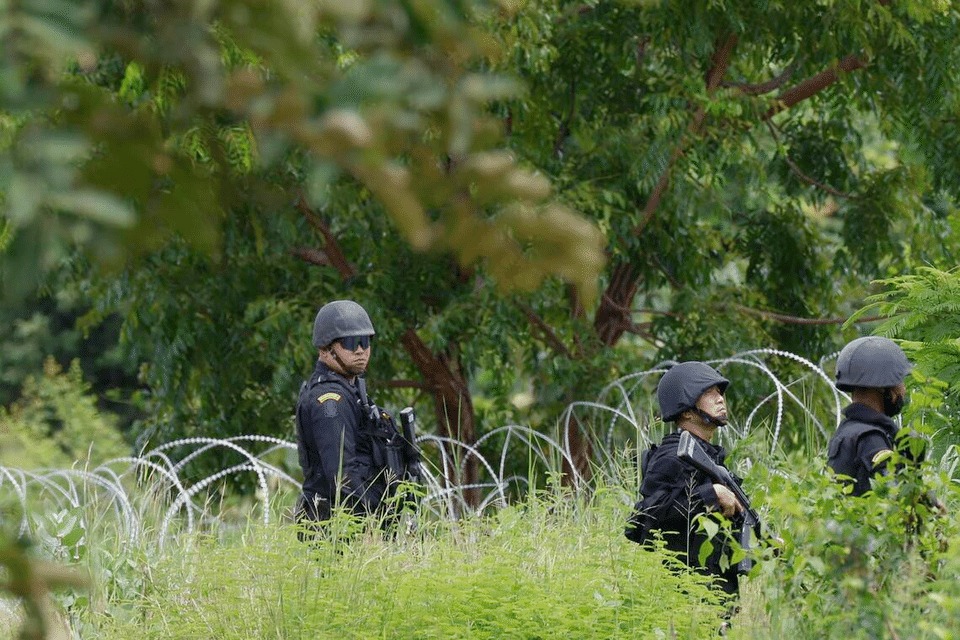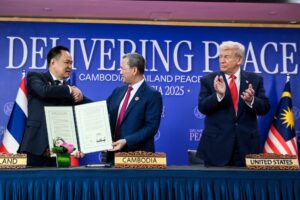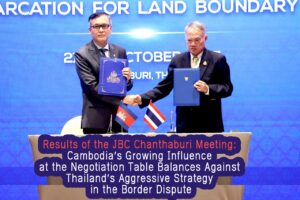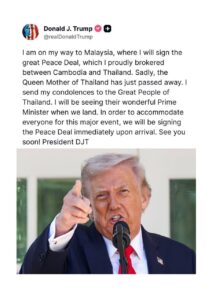Asean needs a non-aggression pact before it’s too late
 Thai rangers patrolling the Thai-Cambodian border at Ban Nong Ya Kaeo in Sa Kaeo province, Thailand, on Sept 19.
PHOTO: EPA
Thai rangers patrolling the Thai-Cambodian border at Ban Nong Ya Kaeo in Sa Kaeo province, Thailand, on Sept 19.
PHOTO: EPA
Peace and stability in South-east Asia are constantly threatened by three types of challenges.
First, internal instability within member states, as the crisis in Myanmar shows. Second, disputes between Asean members, such as the Thai-Cambodia conflict. Third, external pressures from great power rivalries. Of these, inter-state disputes pose the gravest challenge to Asean, as preventing them lies at the heart of its founding purpose.
Asean was established to promote and maintain regional peace and stability. Its primary objective has always been to ensure peaceful relations among countries in South-east Asia.
The main tools to achieve this are the legally binding Treaty of Amity and Cooperation in South-east Asia (TAC) and the Asean Charter. These instruments undergird economic, social and cultural cooperation that promote regional development and shared interests, thereby strengthening Asean’s comprehensive security architecture.
By and large, Asean has been successful. Relations among member states have remained peaceful over the past few decades.
But peace in South-east Asia should never be taken for granted. Unresolved maritime and land boundaries mean the risk of conflict remains real, as the border skirmishes between Thailand and Cambodia remind us. While the potential sources of conflict can never be entirely removed, Asean must be vigilant and keep them dormant.
A TREATY ON NON-AGGRESSION
To sustain peace, Asean should reinforce existing instruments. The ultimate violation of Asean’s objectives and the TAC is an act of aggression, invasion or occupation of one member state by another. Preventing such acts and making them difficult and costly must be the priority.
The TAC and the charter contain pertinent principles such as respect for sovereignty and territorial integrity, non-interference, peaceful settlement of disputes and renunciation of the threat of or use of force that signatories must commit to. However, they do not explicitly prohibit aggression against signatories.
Asean should consider adopting a legally binding treaty on non-aggression. Such a treaty will complement the TAC and the charter and close loopholes.
It would add another layer of political and legal obligation to uphold peace in South-east Asia. It would raise the cost of reckless action by making aggression a contravention of several foundational political and security Asean treaties.
It may boost confidence and trust among Asean members. And it will significantly enhance Asean’s credibility as a force for peace and stability in South-east Asia and the wider Indo-Pacific.
A non-aggression treaty is not aimed at limiting the rights of member states to use force for defensive purposes. Rather, it is meant to prevent the employment of armed aggression from becoming a way to resolve disputes. However difficult and sensitive a dispute may be, it should always be managed and settled through diplomacy and other peaceful means.
CLOSING LOOPHOLES
The TAC’s weakness lies in enforcement, in activating its dispute settlement mechanism when conflict arises. Despite several border disputes, Asean has never invoked its provision to convene a High Council.
More significantly, the TAC has no penalties for breaches. A non-aggression treaty therefore must have a dispute settlement mechanism where there are clear and enforceable consequences.
Given the gravity of aggression by a member against another, decision-making cannot be held hostage to the need for consensus. Instead, a layered approach – consensus where possible, supermajority voting if not – would prevent paralysis.
Where there is a breach, Asean should first call on parties to cease hostilities and withdraw forces. If defiance continues, sanctions must follow. These could include exclusions from certain Asean meetings or suspension from defence, security, economic and development initiatives. Such penalties should be spelt out in the non-aggression treaty.
Because the parties in conflict are themselves Asean members, they cannot be part of the decision on sanctions. That responsibility must rest with the remaining states – ideally by consensus, but if not, through supermajority voting. Denying the belligerents a veto is the only way to make enforcement credible.
Asean could also extend such a treaty to dialogue, sectoral and development partners, especially members of the East Asia Summit. Bringing in major and regional powers that border South-east Asia would not only strengthen regional security but also build long-term trust, contributing to stability across the wider Indo-Pacific.
Where there is a breach, Asean should first call on parties to cease hostilities and withdraw forces. If defiance continues, sanctions must follow.
Publication: The Straits Times
Author: Michael Tene
Michael Tene is a former deputy secretary-general of Asean and a senior fellow at Foreign Policy Community of Indonesia.




